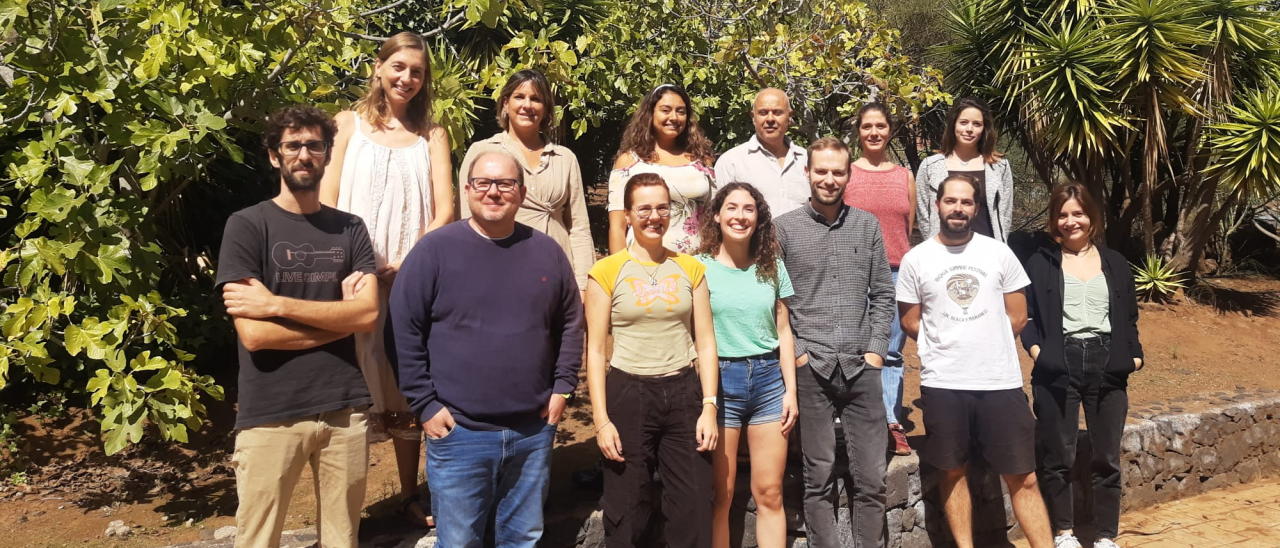Subvenciones relacionadas:
General
Bienvenida a la página web del grupo de investigación Traces of Galaxy Formation.
Somos un grupo de investigación amplio, diverso y muy activo cuyo objetivo principal es entender la formación de galaxias en el Universo de una manera lo más completa posible. Con el estudio detellado de las poblaciones estelares como bandera, estamos constantemente buscando y desarrollando nuevas herramientas e ideas que nos permitan entender cómo las galaxias han llegado a convertirse en lo que hoy observamos.
Una historia de formación compleja, como la que se espera describa la evolución de las galaxias, necesita de un acercamiento multidisciplinar para ser entendida. Nuestro grupo en el IAC está compuesto por personal investigador de gran experiencia en simulaciones cosmológicas, estudios dinámicos, análisis de poblaciones estelares y caracterizaciones morfológicas de galaxias tanto locales como a alto corrimiento al rojo. Combinamos distintas alternativas (e.g. observaciones y teoría o procesos de evolución secular y cosmológica) para poder alcanzar en los próximos años una visión consistente de los mecanismos físicos que regulan la formación de las galaxias.
Dentro de este esquema general, estamos principalmente centrados en el estudio de tres líneas centrales:
- Modelos de síntesis de poblaciones estelares
- Desarrollo de modelos de poblaciones estelares
- Métodos de análisis para el estudio de poblaciones estelares
- Universalidad de la función inicial de masa (IMF)
- Evolución cósmica de galaxias
- Evolución de galaxias masivas
- Poblaciones estelares en distintos entornos
- Ciencia a bajo brillo superficial
- Simulaciones númericas y aprendizaje automático
- Procesos evolutivos en galaxias cercanas
- Agujeros negros como moduladores de la formación estelar
- Cartogrtafiados locales
- Cinemática estelar y modelos dinámicos
Si quieres ponerte en contacto o trabajar con el grupo, por favor, envía un correo al investigador principal (Ignacio Martín-Navarro ignacio.martin [at] iac.es (ignacio[dot]martin[at]iac[dot]es)).
Miembros
Resultados
Esta es una muestra de algunos de nuestros resultados destacados más recientes:
- Local variations of the stellar velocity ellipsoid - II. The effect of the bar in the inner regions of Auriga galaxies. Walo et al. 2022, MNRAS (https://ui.adsabs.harvard.edu/abs/2022MNRAS.513.4587W)
- Anisotropic satellite galaxy quenching modulated by black hole activity. Martín-Navarro et al. 2021, Nature (https://ui.adsabs.harvard.edu/abs/2021Natur.594..187M)
- Evaluating hydrodynamical simulations with green valley galaxies. Angthopo et al. 2021, MNRAS (https://ui.adsabs.harvard.edu/abs/2021MNRAS.502.3685A)
- Sub one per cent mass fractions of young stars in red massive galaxies. Salvador-Rusiñol et al. 2020, Nature Astronomy (https://ui.adsabs.harvard.edu/abs/2020NatAs...4..252S)
- Detection of young stellar populations in apparently quenched low-mass galaxies using red spectral line indices. de Lorenzo-Cáceres et al. 2020, MNRAS (https://ui.adsabs.harvard.edu/abs/2020MNRAS.498.1002D)


